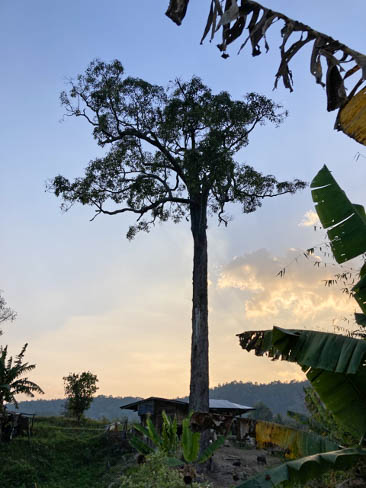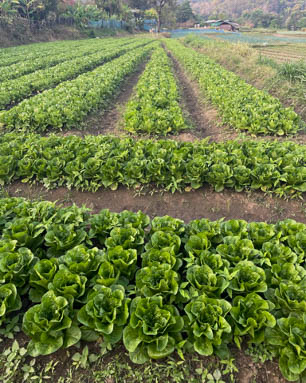Indigenous Rights and Recognition Battle
Indigenous rights are human rights. Indigenous communities are continuously disenfranchised by systemic injustices in Thailand, and through creativity and solidarity, individuals and networks are working toward a more equitable world.
UNDRIP: United Nations Declaration on the Rights of Indigenous Peoples
On Sept. 13, 2007, the United Nations General Assembly adopted the UNORIP. Thailand voted yes, among the other 143 countries out of 192 total voting powers. The adoption of the declaration, however, does not reflect the lived experience of Indigenous peoples in the country. Many layers of intersectional injustice, which begin at nonrecognition, are barriers to Indigenous communities receiving the same basic health, legal and social services as Thai people. To understand the entire scope of this issue, one must first understand the homogenization of the Thai identity and the effects of not being considered a full Thai citizen.
Homogenization of Identity
Thailand was never officially colonized but instead experienced an internal colonization. At the time of global colonization, all royal, government and military power was centralized in Siam. For many reasons, Siam, aka Bangkok, used its centralizing influence to unify all peoples in modern-day Thailand under one identity: Thai. Identity encompasses the language spoken, food consumed and the larger cultural expression of a nation. In the quest to be internally colonized, everyone was encouraged by the king, King Chulalongkorn or King Rama V, to assimilate to the established Thai identity in order to reflect modernization. Thus, Thai people were educated under the Central Thai language system, people were registered as Thai citizens, and a central culture from Bangkok became the standard for Thai people.
What it means to be Thai is directly tied to this way of life and often means that cultural diversity is not recognized in a larger legal capacity. However, Thailand is an incredibly diverse country, with many Indigenous groups having lived and thrived across the region. In the north, many of these groups subsist on largely agricultural means and have a culture completely unique to their ecological environment and history. Many have been in Thailand, dating back some 400 years or more. However, all of these Indigenous groups are not considered full Thai citizens but are actually categorized legally under an “ethnic minority” within the Thai government. As a result, they are not recognized as Indigenous groups and are not supported by the UNDRIP declaration. Additionally, they are not granted citizenship and so lack legal protections and representation within the country. Furthermore, they are unable to access many basic resources like healthcare services, education services, uninhibited domestic and international travel, and parliamentary representation. There are many other benefits to citizenship as well, but these are the main reasons why Indigenous groups continue to protest for full Thai citizenship.
Sustainability and Land Rights
communities have begun documenting their histories and geographical occupation to show both their use of land, conservation practices, and culture. One interesting way I’ve noticed that documentation can occur is through dating trees. At the village Huay E-Khang, there is a 400-year-old mango tree, which dates back to the early establishment of the village. In order for a mango tree to have lived for so long in such health, it often requires the intervention of human care. Considering this tree was the only one of its kind in the surrounding area, it was apparent this tree held special significance.

PHOTO CREDIT: NILA BARNOON
As the issue of global warming and sustainable development practices increases in importance within Southeast Asia, many countries have begun to institute national conservation practices. Thailand has passed land conservation policies aimed at preserving Thailand’s remaining environmental resources. Many of these laws dictate that no one is allowed to utilize these resources or even live on the physical land without special permits and legal conditions. The areas affected are largely inhabited by Indigenous people, whose care of the forest and sustainable living practices has made the land a valuable conservation commodity in the eyes of the Thai government. Due to these direct policies, efforts to remove and displace communities from their land and subsistence practices are increasingly underway as the Thai government seeks to repurpose them for economic gain. The process undergone in this strategy is called territorialization, in which the governing body seeks to consolidate power by creating legal boundaries around existing resources.
The land Indigenous communities have been taking care of and living on is more resource-abundant and biodiverse because of their intentional, sustainable approach. Centuries of traditional ecological knowledge about medicinal plants and agricultural practices can be directly reflected in the day-to-day lives of these communities. Their livelihood is directly tied to the land.
The governmental policies, however, inherently mark Indigenous people as illegal residents and criminalize their way of life. There are also intentional confirmed efforts to remove people from their land, whether through direct or indirect means. Due to the displacement that these policies cause, these Indigenous communities are directly harmed and are unable to continue their cultural practices. They are also unable to maintain food security and sovereignty.
If you were to ask: How is it that the marginalized groups of Thailand are being displaced from their land, for which they have existed for centuries? And why under the guise of sustainable conservation from a national perspective? When looking at this specific case, we can see how centralized power aimed at sustainable design often neglects to recognize the needs of those directly affected. Conservation, as recognized by a state, is not the perfect answer to sustainability.
Another facet of this is the imposition of commercialized agriculture in Indigenous communities. The influence of the government extends much further than just the centralized identity and can now be reflected through the implementation of agricultural projects in the mountainous communities. The government supported agricultural initiatives to grow imported crops in these mountainous communities, which are not native to the environment. In order to be sold as organic, they must be treated with special care. One of the main drawbacks of growing these crops for export is that village peoples don’t have time to grow necessary food for themselves and cannot grow the native diverse species within the designated area.
Solidarity in Community and Media Representation
There are many different concerns these communities have. Stateless status, or marginalized status, offers them no protections of representations within the Thai government system, and so contesting these policies and their extending impacts is very difficult. However, Indigenous groups have created solidarity amongst their communities on a national level to build support around these collective issues. They have proposed a bill that will amend these harmful policies and acknowledge their existence as Indigenous. Many nonprofits founded and operated by Indigenous individuals also work to combat these systemic issues.
Interview with a Karen Journalist
To provide some insight into the issues faced by Indigenous communities in Thailand, I had the opportunity to speak to Pi Phnom, a Karen journalist based in Northern Thailand. He is known for founding the Indigenous Media Network (Thailand) and has collaborated with other Indigenous organizations such as the Inter Mountain People Education and Culture in Thailand Association, on many pertinent Indigenous issues in the country. Much of his message through the Indigenous Media Network is to unfound stereotypes in national and local media by working directly with the media outlets, as well as provide journalistic material tailored to the needs and representation of Indigenous communities.
In this interview, I wanted to focus on his perspective as an Indigenous person and why he has taken to using a journalistic media approach to address Indigenous rights in Thailand. He mentioned that many unfounded stereotypes come from misrepresentation of Indigenous people in media: “I think just, I’m going to say that, sometimes… the misinterpretations… and misuse of words that describe Indigenous peoples don’t mean that that person intentionally abused Indigenous peoples or groups- they just act and behave on whatever information they have in their minds. I would like the main encouragement to be to provide them correct information so they can learn from us and open another door to learn about Indigenous community- they can see us from our side”. Behind his motivation for establishing the media approach is the two-way communication that is often missing in the public discourse around Indigenous communities. The passion for establishing these modes of communication stemmed from his early personal experience, where speaking openly about his culture would be met with harmful stereotypes: “At first, I would say, I was quite afraid to show up as myself, and would try my best to find my identity when I was in the high school or in public. Once the people learned that you are Indigenous community, they start to bully you, asking questions about your life in the community.” He then spoke how non-governmental organizations, such as IMPECT, work to combat these harmful stereotypes and experiences by educating communities on their rights: “Later when I returned to my communities, I got to know one of the NGOs, who taught us about Human Rights and Indigenous Rights. And, we do have rights to exercise in society, and that’s why I look at the root of the problem of why people are identifying us as another class, or a second-class population.”
When asked about the collective issues facing Thailand, he elaborated on the issues of nonrecognition and its fundamental importance in creating change in Thailand. “The Thai government, instead of calling us “Indigenous People,” they call us “ethnic groups.” As such, the Indigenous communities are in this ongoing struggle to be endorsed under the Thai constitution, to gain official recognition,” he said. Furthermore, the solution lies in the ability to change this through legislation and grassroots organization, as recognition affects the ability to access certain rights in Thailand: “When you are not recognized, you don’t have rights over almost everything. For example, Land Rights— you don’t have rights over land, even though you have stayed there for two or three centuries.” On the ground level, communities are working to document their village history to document their existence as being placed before the establishment of Thailand. They are using maps as a way of denoting where they have used land for farming and building their homes, both to demarcate their history and to show they are not contributing to deforestation: “[The maps show] they have been here for generations and this part of the land has been used by them and how they have protected the forest.”
To conclude, the issues facing Indigenous peoples in Thailand start with recognition, but extend much further into quality of life, education and right to cultural preservation. Thailand is undergoing a unique transformative process through the collective efforts of vulnerable Indigenous communities networking and organizing to create change. We can learn so much about the power of networking from a powerful voice using his resources and passion to create change on multiple levels for his community and many others.



